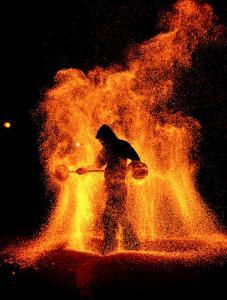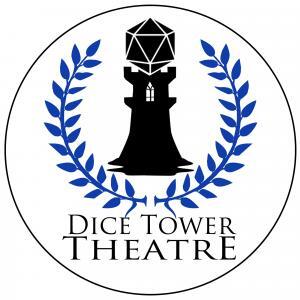Searing Smite
Paladin - 1 Level Spell
School: Evocation
Casting Time: 1 Bonus Action
Range: Self
Components: Verbal
Duration: 1 Minute
Attack/Save: CON
Reference: PHB 274
Concentration
The next time you hit a creature with a melee weapon attack during the spell’s duration, your weapon flares with white-hot intensity, and the attack deals an extra ld6 fire damage to the target and causes the target to ignite in flames. At the start of each of its turns until the spell ends, the target must make a Constitution saving throw. On a failed save, it takes ld6 fire damage. On a successful save, the spell ends. If the target or a creature within 5 feet of it uses an action to put out the flames, or if some other effect douses the flames (such as the target being submerged in water), the spell ends.
At Higher Levels. When you cast this spell using a spell slot of 2nd level or higher, the initial extra damage dealt by the attack increases by ld6 for each slot level above 1st.
My Comments: So for our next foray into the discussion of the various Paladin Smite spells, I’d like to take a look at Searing Smite. Of all the Smite spells, this one is by far my least favorite for game reasons, though I love the idea of creating a sword of holy flame, so it has some good coolness-points going for it.
Terra, why so much hate for Searing Smite? To be perfectly honest, it’s not a very good spell. Granted, increasing the damage for higher-level spell slots is always useful, but if your target makes the save, it does not cause any extra damage. Most Smite spells will cause the extra damage regardless of whether they save or not, but in this case it’s dependent upon the saving throw. You could be throwing away a spell slot as a class whose spells are, arguably, reserved for causing more damage.
Granted, it’s nice when it works: make a foe catch on fire. That means they will either continue to take damage (getting a free saving throw every round to have the fire go out, ending the extra damage) or they (or their adjacent ally) must use an action to snuff it, forcing them to not act against you.
“So while Searing Smite has some cool-sounding effects – who doesn’t want to set their foes on fire? – it has to overcome two specific difficulties.”
So while Searing Smite has some cool-sounding effects – who doesn’t want to set their foes on fire? – it has to overcome two specific difficulties.
First, most Paladins take on the more burly of their foes. That means that they are usually locked in combat with strong and/or large opponents. Almost all of these foes will have a higher Constitution score, thereby making the save statistically more capable. While it’s possible to save this spell for the more squishy opponents, they already have less hit points and can be dispatched with regular steel or by the less martial of your companions.
Second, fire tends to be the energy type that most characters have resistance to. So it may be useful if you know you’re going up against villains vulnerable to fire, or in those locations where most things will be resistant to cold. However, having resistance to fire would make the hit point damage already lower, if they even catch fire at all.
So there you have it: Searing Smite, as a spell in the Paladin’s quiver of Smites, is one of the least useful of them statistically. Again, it gets cool points for setting foes on fire, if it actually succeeds in doing so. Do you agree? Disagree? What do you think of Searing Smite? Let’s chat about it in the comments below.


